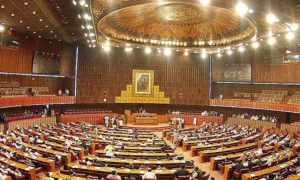COAS Tenure Extended to 5 Years in Pakistan

Sweeping Changes to Military Command Duration
Recent legislative bill has fundamentally altered Pakistan’s military command structure. The parliament has approved unprecedented changes to the COAS tenure. The new legislation effectively removes standard retirement age restrictions for the top military position.
Under previous rules, military chiefs served fixed terms with clear retirement dates. The new framework allows for indefinite extensions of the Army Chief’s tenure. Military leadership can now potentially extend beyond traditional service limits through consecutive appointments.
Extended Service Terms Across Military Branches
Army Leadership Changes
The standard military chief tenure has increased from three years to five years. This modification doubles the potential continuous service period through standard extensions. The changes apply retroactively to current leadership appointments.
Naval and Air Force Adaptations
Similar extensions now apply to both Navy and Air Force leadership positions. Each service branch chief can serve initial five-year terms with extension possibilities. These changes align all military branch leadership terms with the new framework.
Comprehensive Judicial System Expansion

Supreme Court Restructuring Initiative
The government has enacted significant changes to the Supreme Court’s composition. The number of Supreme Court justices will increase from seventeen to thirty-four positions. This expansion represents the largest structural change to Pakistan’s highest court in decades.
The new judicial positions will be filled through established appointment procedures. Legal experts anticipate significant changes in judicial decision-making dynamics. The expanded bench may influence future constitutional interpretations. The government aims to get a complete hold on the apex judiciary. This is unprecedented globally to double the number of judges for personal gains.
High Court System Modifications
Provincial High Courts face similar structural expansions under the new framework. Each High Court will receive three additional judicial positions. The expansion increases the total judge count from nine to twelve members.
These changes aim to address case backlogs and judicial efficiency concerns. The new positions will require careful selection of qualified judicial candidates. Implementation plans include phased appointments over several months.
Timeline and Implementation Strategy
Immediate Effects
The military leadership changes take immediate effect upon legislative approval. Current service chiefs can benefit from the new extended tenure provisions. Administrative procedures for extensions have been streamlined under the new framework.
Long-term Implementation Plan
The judicial expansion will follow a structured implementation timeline. New judicial appointments will proceed through established constitutional processes. The complete expansion may take up to eighteen months.
Constitutional and Political Implications

Governance Structure Impact
The reforms significantly alter Pakistan’s civil-military power balance. Traditional checks and balances face new challenges under the expanded authority structure. Constitutional experts highlight potential impacts on democratic institutions.
Legislative Oversight Changes
Parliamentary oversight mechanisms require adaptation to the new framework. Traditional legislative controls face significant modifications under the new system. The reforms create precedents for future institutional changes.
Compromised Judiciary Motives
The expanded judicial system results in a compromised judiciary. The government aims to weaken the new Chief Justice of Pakistan by induction of judges favouring the ruling coalition.
Regional and International Context
Diplomatic Considerations
Neighboring countries observe these institutional changes with strategic interest. Regional security dynamics may shift under the new leadership framework. International partners assess potential impacts on regional stability.
Global Security Implications
The reforms coincide with significant international security developments. Global partners evaluate the changes’ impact on regional cooperation. Strategic relationships may require reassessment under the new framework.
Historical Context and Precedents
Past Constitutional Changes
Pakistan’s governance structure has passed through similar historical changes. Previous modifications set important precedents for current reforms. Historical patterns provide context for understanding current developments.
Institutional Development Patterns
The changes follow established patterns of institutional evolution. Similar reforms have shaped Pakistan’s governance structure previously in dictatorship regimes. Historical analysis reveals recurring themes in institutional development.
Professional Analysis and Evaluation
Legal Framework Assessment
Constitutional experts continue analyzing the reforms’ legal implications. The changes create new precedents in administrative law. Future legal interpretations may evolve under the new framework.
Administrative Impact Study
Government agencies evaluate operational impacts of the changes. Implementation requires significant administrative adjustments. Efficiency improvements remain a key implementation goal.
Concluding Analysis

The constitutional reforms represent unprecedented changes to Pakistan’s governance structure. These modifications will significantly influence future institutional development. It will disturb the pretendable balance between civil military relationships. The COAS will never leave his chair until he himself decides.
The changes create new paradigms in civil-military relations and judicial operations. Success depends on effective management of implementation challenges. Future developments will reveal the full impact of these significant reforms.
